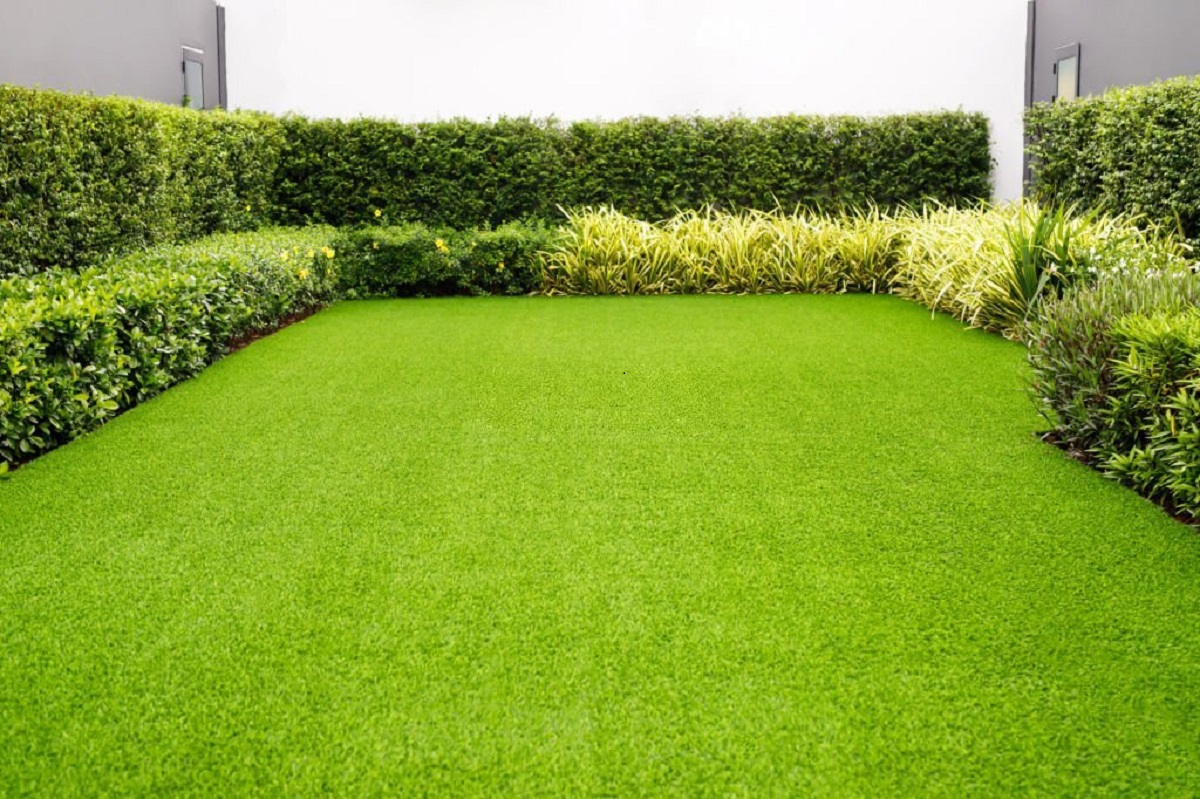Are you tired of constantly mowing your lawn and dealing with pesky weeds? Or maybe you’re looking for a more sustainable and low-maintenance alternative to natural grass? If so, synthetic grass could be the perfect solution for you. In this comprehensive guide, we will walk you through the entire process of installing synthetic grass, from choosing the right materials to maintaining your new lawn. With a bit of patience and some basic tools, you can transform your outdoor space into a beautiful and functional area that requires minimal upkeep.
1. Choosing the Right Synthetic Grass
Before you can begin the installation process, you’ll need to choose the right synthetic grass for your specific needs. There are several factors to consider, including:
- Pile height: This refers to the length of the grass blades. Taller pile heights (typically around 30-45mm) provide a more natural and luxurious appearance, while shorter piles (around 15-25mm) are more suitable for high-traffic areas and sports applications.
- Density: The density of the grass refers to the number of fibers per square inch. Higher density grasses provide a more realistic appearance and better durability, but they are also more expensive.
- Texture: Synthetic grass is available in various textures, ranging from soft and fine to coarse and stiff. Choose a texture that best suits your preferences and intended use.
- Color: Most synthetic grasses come in a variety of green shades, with some even featuring brown thatch fibers for added realism. Choose a color that blends well with your surrounding landscape.
2. Tools and Materials Needed for Installation
To install synthetic grass, you will need the following tools and materials:
- Synthetic grass of your choice
- Weed barrier fabric
- Sharp utility knife
- Hammer
- Nails or landscape staples
- Measuring tape
- Straight edge or board
- Sand or crushed stone (for base)
- Compactor or tamper
- Landscape edging (optional)
- Seaming tape and adhesive (if joining multiple pieces)
- Infill material (typically silica sand or rubber crumb)
- Stiff-bristled broom
3. Ground Preparation
Proper ground preparation is essential for a successful synthetic grass installation. Follow these steps to prepare the area:
- Remove any existing grass, weeds, and debris from the installation area.
- If necessary, excavate the area to a depth of 3-4 inches to allow for the installation of a compacted base.
- Install a weed barrier fabric to prevent weed growth and ensure proper drainage.
- Add a layer of sand or crushed stone (approximately 2-3 inches deep) and compact it with a compactor or tamper. This will create a stable and level base for the synthetic grass.
- Optional: Install landscape edging around the perimeter of the installation area to help keep the synthetic grass in place and provide a clean, finished look.
4. Laying the Synthetic Grass
Once the ground is properly prepared, you can begin laying the synthetic grass:
- Unroll the synthetic grass over the prepared area, ensuring that it is aligned correctly and covers the entire space.
- Allow the grass to settle for a few hours or even overnight, as this will help it conform to the contours of the ground and make it easier to work with.
- Trim any excess grass along the edges, using a sharp utility knife and a straight edge or board as a guide.
5. Cutting and Securing the Edges
To ensure a professional-looking finish, it’s essential to cut and secure the edges of the synthetic grass properly:
- Using a sharp utility knife, carefully trim the grass along the edges of the installation area, following the contours of the landscape edging or other border features.
- Secure the edges of the grass with nails or landscape staples, spaced approximately 12 inches apart. Make sure the nails or staples are driven through the grass backing and into the compacted base, but not so deep that they cause the grass to buckle or ripple.
6. Joining Multiple Pieces
If your installation requires multiple pieces of synthetic grass, you’ll need to join them together using seaming tape and adhesive:
- Position the two pieces of grass so that their edges are touching but not overlapping.
- Fold back the edges of both pieces to expose the backing.
- Lay the seaming tape along the length of the seam, with the adhesive side facing up.
- Apply the adhesive to the seaming tape, following the manufacturer’s instructions.
- Carefully press the edges of the grass into the adhesive, ensuring that the fibers do not get caught in the adhesive.
- Use a stiff-bristled broom to brush the fibers back into place, concealing the seam.

7. Infilling the Synthetic Grass
Infilling your synthetic grass helps to weigh it down, provide cushioning, and support the grass fibers. Most synthetic grass installations use silica sand or rubber crumb as infill materials:
- Apply the infill material evenly across the surface of the grass, using a drop spreader or by hand.
- Use a stiff-bristled broom to work the infill material into the grass fibers, brushing against the grain to help the fibers stand up.
- Add more infill material as needed, continuing to brush the fibers until the infill is evenly distributed and the grass fibers stand upright.
8. Maintenance and Care
One of the main benefits of synthetic grass is its low-maintenance nature. However, it’s still essential to care for your new lawn to ensure it remains in top condition:
- Regularly remove debris, such as leaves and branches, to prevent buildup and maintain proper drainage.
- Use a stiff-bristled broom or a leaf blower to keep the grass fibers standing upright and looking their best.
- If you have pets, promptly clean up any messes and rinse the area with water to prevent odors and maintain hygiene.
- Periodically check the seams, edges, and infill levels, making any necessary repairs or adjustments.
Conclusion
Installing synthetic grass can be a rewarding DIY project that provides a beautiful, low-maintenance lawn for years to come. By following this comprehensive guide, you’ll be well on your way to transforming your outdoor space and enjoying the many benefits of synthetic grass. So, gather your tools, choose the perfect grass for your needs, and get ready to create a stunning and functional lawn that requires minimal upkeep.

